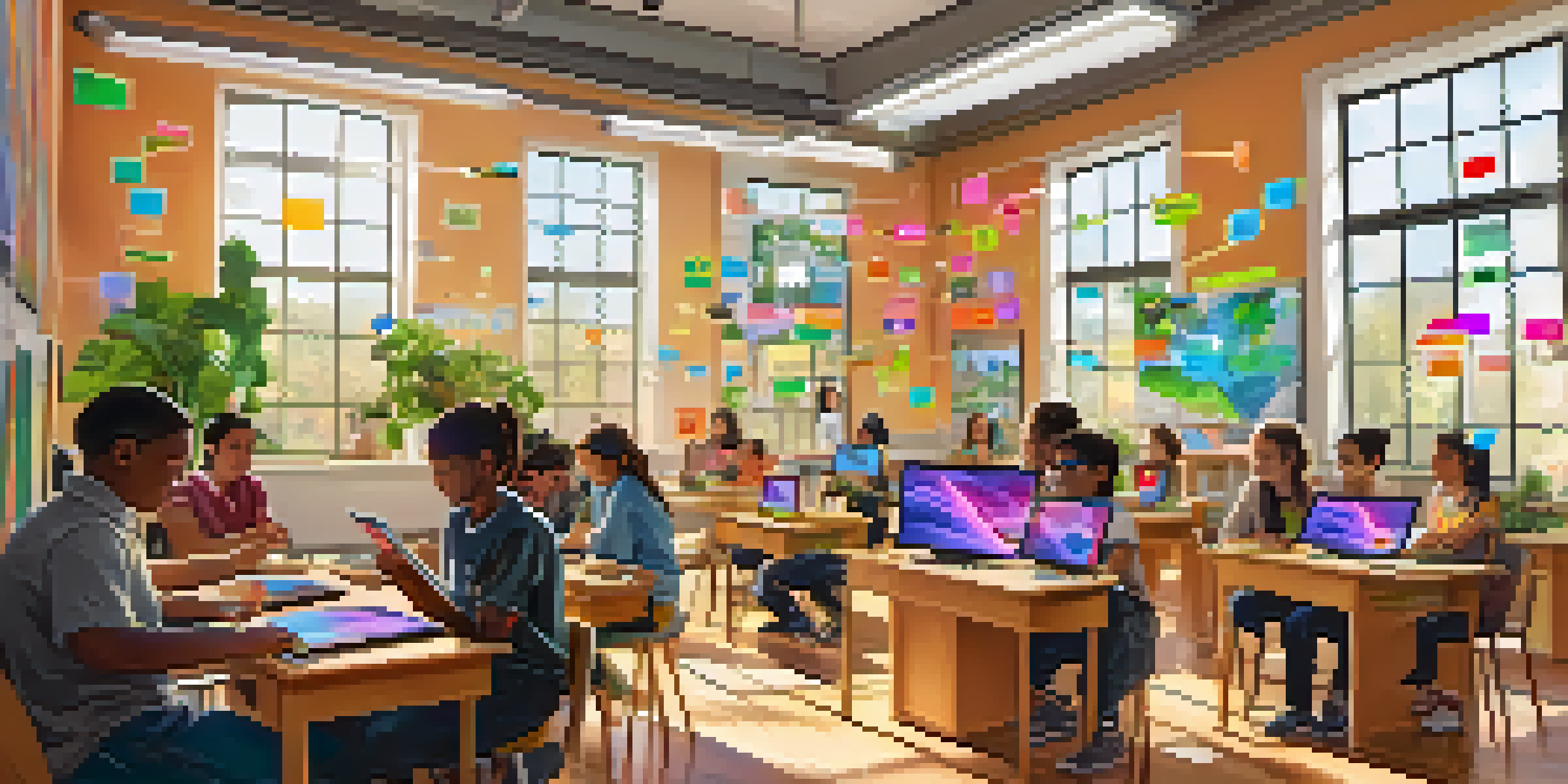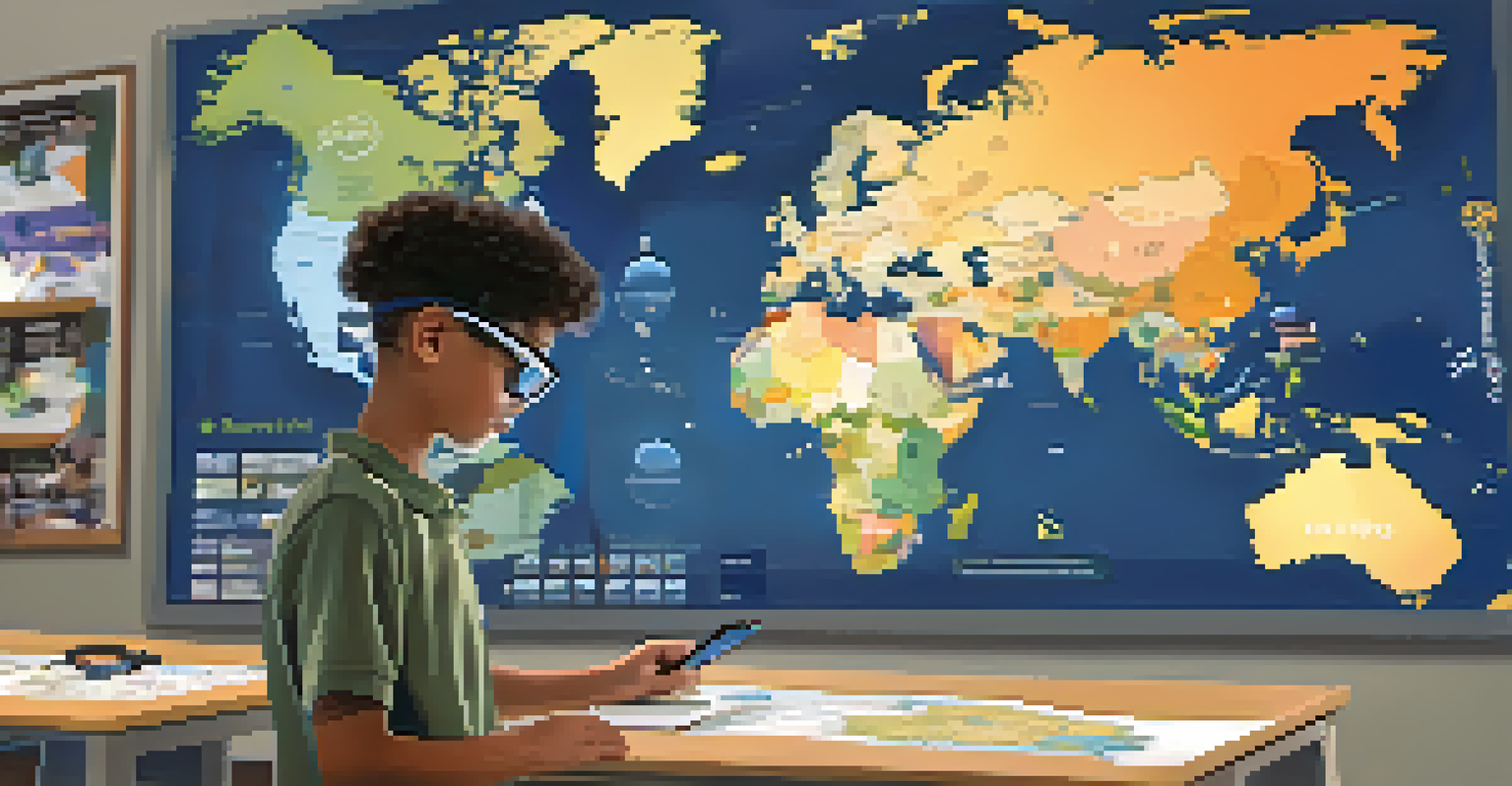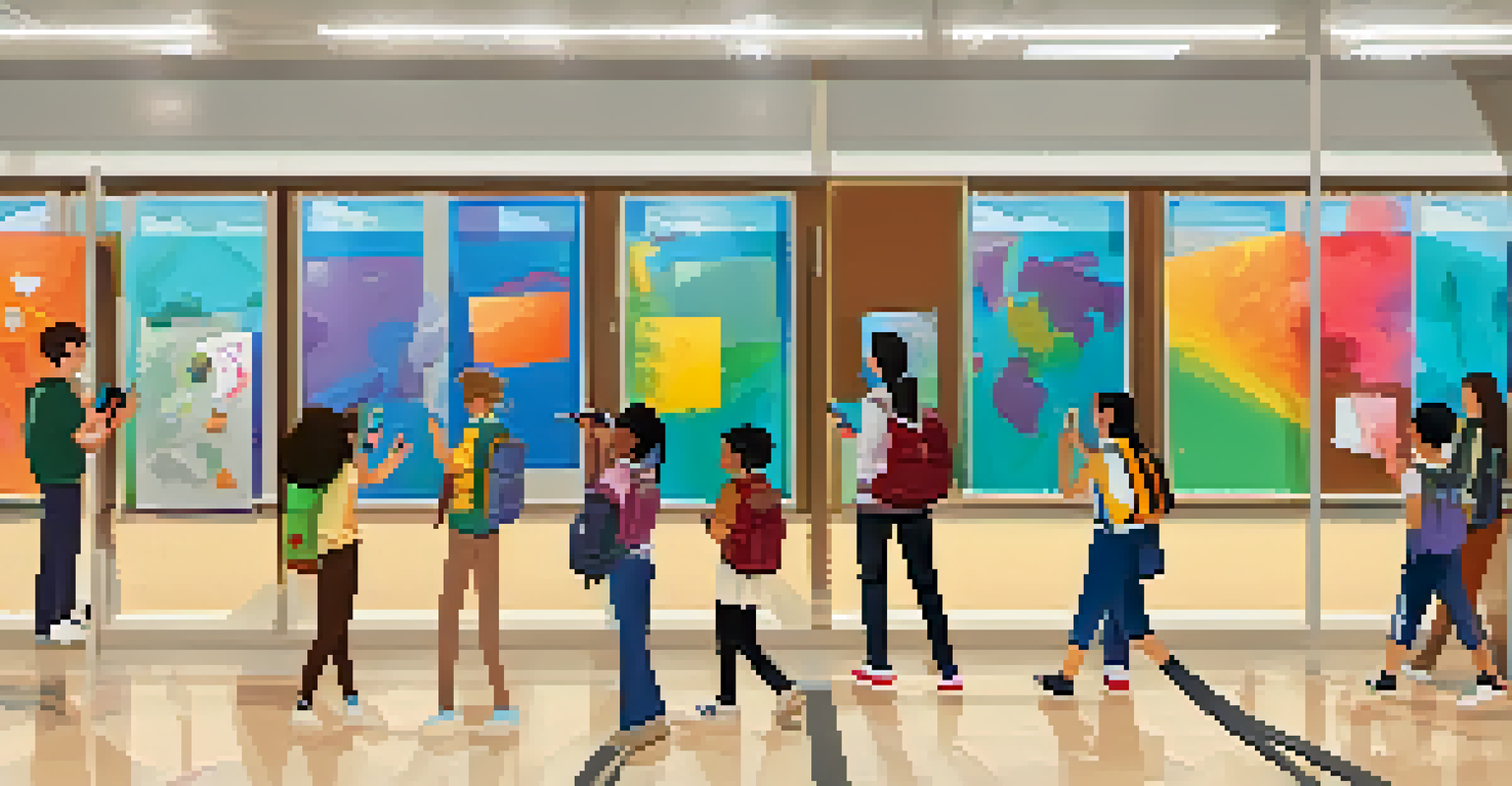Integrating AR in Educational Assessments and Testing

Understanding Augmented Reality in Education
Augmented Reality (AR) blends digital content with the real world, creating immersive experiences. In the classroom, this technology can transform traditional learning methods, making lessons more engaging. By overlaying interactive elements onto physical environments, AR encourages students to explore concepts in a hands-on way.
Technology is best when it brings people together.
For instance, imagine chemistry students using AR to visualize molecular structures right on their desks. This not only enhances understanding but also sparks curiosity, making learning feel more relevant and impactful. Such interactive experiences can motivate students to dive deeper into subjects they might otherwise find challenging.
As educators explore the possibilities of AR, it's crucial to consider how it can be integrated into assessments. The goal is to create an environment where students can demonstrate their knowledge in innovative ways, making learning both fun and effective.
Benefits of AR in Educational Assessments
Integrating AR into assessments offers numerous benefits, starting with increased engagement. When students can interact with content through AR, they are more likely to stay focused and interested in the material. This heightened engagement can lead to better retention of information, as students actively participate in their learning.

Moreover, AR allows for personalized assessments tailored to individual learning styles. For example, a geography assessment could use AR to let students explore landmarks in a virtual environment, catering to visual learners. This personalized approach can help educators gauge student understanding more accurately.
AR Enhances Engagement in Learning
Augmented Reality transforms traditional education by creating interactive experiences that keep students engaged and motivated.
Additionally, AR can facilitate immediate feedback, an essential component of effective learning. As students complete assessments in an AR setting, they can receive real-time insights into their performance, helping them identify areas for improvement instantly.
Creating Interactive Assessment Experiences
Designing AR-based assessments requires creativity and innovation. Educators can start by identifying key learning objectives and then brainstorm how AR can bring those objectives to life. For instance, instead of a standard quiz, teachers could create an AR scavenger hunt where students discover answers hidden in their environment.
The greatest danger in times of turbulence is not the turbulence; it is to act with yesterday's logic.
Incorporating gamification elements, such as points or badges, can further enhance the experience. Students love a good challenge, and turning assessments into interactive games can alleviate test anxiety while promoting collaboration. This approach fosters teamwork and social interaction, crucial for building a supportive learning environment.
Ultimately, the goal is to create assessments that not only evaluate student knowledge but also foster a love for learning. By integrating AR, educators can pave the way for memorable experiences that resonate with students long after the test is over.
Challenges of Implementing AR in Assessments
While the potential of AR in educational assessments is vast, there are challenges to consider. One significant hurdle is the technological barrier; not all schools have access to the necessary devices or software. This disparity can create inequalities in learning opportunities, making it essential to find solutions that ensure all students benefit from AR technologies.
Additionally, educators may need training to effectively implement AR in their assessments. Understanding how to design AR experiences and integrate them into existing curricula is crucial for success. Without proper training, the technology may not be used to its full potential, leading to frustration for both teachers and students.
Personalized Assessments with AR
AR allows for tailored assessments that cater to individual learning styles, providing a more accurate gauge of student understanding.
Lastly, there’s the challenge of ensuring that AR assessments align with curriculum standards. It’s essential to maintain educational rigor while introducing innovative tools, ensuring that assessments remain valid and reliable measures of student learning.
Future Trends in AR for Educational Assessments
The future of AR in educational assessments looks promising, with ongoing advancements in technology. As AR applications become more sophisticated, we can expect enhanced interactivity and realism in learning experiences. Imagine assessments that allow students to conduct virtual experiments or explore historical events in real-time!
Moreover, the integration of artificial intelligence (AI) with AR could lead to even more personalized assessments. AI can analyze student interactions and adapt the learning experience to meet their unique needs, ensuring that each student receives tailored support. This synergy could revolutionize how we assess learning outcomes.
As these technologies continue to evolve, educators will need to stay informed and adaptable. Embracing these changes will be essential for creating effective, engaging assessments that prepare students for the future.
Case Studies of AR in Educational Assessments
Several schools and institutions have already begun integrating AR into their assessment frameworks with noteworthy results. For example, a university used AR to create a virtual anatomy lab, allowing medical students to explore the human body in a 3D environment. The immersive experience significantly improved students' understanding and retention of complex material.
Another case study involved a high school that implemented AR-based history assessments. Students could use their smartphones to scan historical artifacts, triggering AR content that provided context and information. This interactive approach not only engaged students but also deepened their appreciation for history.
Future Trends in AR Assessments
The integration of AI with AR in educational assessments is set to revolutionize learning by offering personalized and interactive experiences.
These examples illustrate the potential impact of AR on educational assessments. By learning from these pioneers, other educators can adopt similar strategies, tailoring them to their unique classroom environments.
Conclusion: The Future of Assessments with AR
As we look ahead, integrating AR into educational assessments represents a significant shift in how we evaluate learning. The potential for enhanced engagement, personalized experiences, and immediate feedback is transforming traditional assessment methods. By adopting AR, educators can create dynamic assessments that resonate with today’s tech-savvy students.
However, it's crucial to navigate the challenges of implementing AR thoughtfully, ensuring access and training for educators. Collaboration between tech developers and educational institutions will be key in overcoming these hurdles and maximizing the benefits of AR.

Ultimately, the integration of AR in educational assessments holds the promise of making learning more interactive, enjoyable, and effective. By embracing this technology, we can prepare students not just to pass tests, but to thrive in an increasingly complex world.